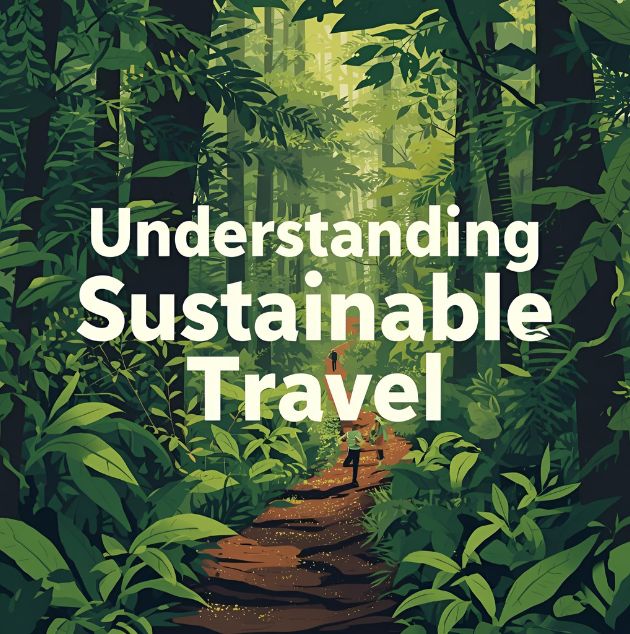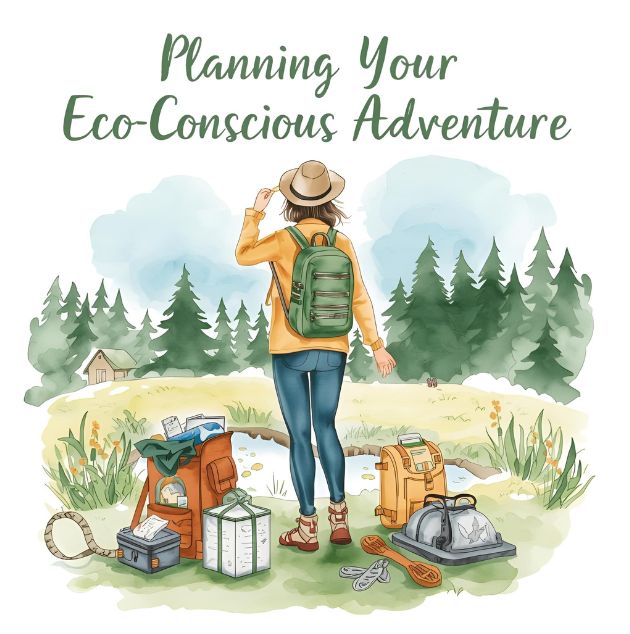The Dawn of a New Era in Exploration
Travel is a transformative force. It shatters our preconceptions, broadens our horizons, and connects us to the vibrant tapestry of humanity and nature. For decades, the goal was to see as much as possible, to tick off destinations from a bucket list. But a quiet, powerful shift is underway. We are beginning to ask not just where we can go, but how we can go. How can our journeys enrich the places we visit, rather than deplete them? How can we leave a positive footprint on the world? This is the heart of sustainable and ethical travel.
This isn’t about sacrificing adventure; it’s about enhancing it. It’s about swapping crowded tourist traps for authentic local experiences, choosing a family-run guesthouse over a faceless resort, and feeling the profound satisfaction of knowing your wanderlust is contributing to a better world. This comprehensive guide is your compass for navigating this rewarding path, helping you plan and execute trips that are as kind to the planet as they are enriching for your soul.
The Three Pillars: Understanding Sustainable Travel
Sustainable travel isn’t a niche or a trend; it’s a mindset built on three interconnected pillars. Understanding these principles is the first step to becoming a more conscious traveler.

1. Environmental Responsibility: Protecting Our Playground
This is often the first thing that comes to mind with sustainability. It involves actively working to minimize your negative impact on the natural environment. The goal is to preserve the pristine beaches, lush rainforests, and vibrant coral reefs for generations of locals and travelers to come.
- Reduce, Reuse, Refuse: The mantra of zero-waste living is doubly important on the road. Refuse single-use plastics like straws, bags, and cutlery. Carry a reusable water bottle and coffee cup. Opt for products with minimal or no packaging.
- Conserve Resources: Be mindful of water and electricity usage in your accommodations, just as you would at home. Turn off lights and air conditioning when you leave the room. Take shorter showers.
- Choose Conscious Transport: Transportation is a major contributor to a traveler’s carbon footprint. Whenever possible, opt for overland travel like trains and buses instead of short-haul flights. At your destination, explore on foot, by bicycle, or using public transport.
- Leave No Trace: Whether you’re hiking in a national park or relaxing on a beach, pack out everything you pack in. Stick to marked trails to avoid damaging fragile ecosystems.
2. Socio-Cultural Respect: Engaging with Authenticity
Ethical travel is about honoring the people, culture, and traditions of the places you visit. It’s about being a gracious guest in someone else’s home. This fosters positive interactions and ensures that tourism doesn’t erode local culture but instead helps it thrive.
- Learn Before You Go: Take some time to learn a few basic phrases in the local language (‘hello’, ‘thank you’, ‘please’). Research local customs, dress codes, and social etiquette to avoid unintentional disrespect.
- Ask for Permission: Always ask for consent before taking photos or videos of people, especially children. A smile and a gesture can go a long way. Remember that a person is not a tourist attraction.
- Support Cultural Heritage: Visit cultural heritage sites, museums, and local art galleries. Attend traditional performances. When you do, pay the entrance fees, as this money often goes directly towards preservation efforts.
- Be a Humble Observer: Approach every interaction with humility and an open mind. You are there to learn and experience, not to judge or impose your own values.
3. Economic Empowerment: Ensuring Your Money Matters
Where you spend your money has a direct and significant impact. Sustainable travel aims to ensure that tourism revenue benefits the local community directly, rather than being siphoned off by large, foreign-owned corporations. This creates stable livelihoods and gives local people a vested interest in protecting their natural and cultural assets.
- Stay and Eat Local: Choose locally owned guesthouses, boutique hotels, or homestays. Eat at family-run restaurants and street food stalls. Your money is more likely to stay within the community this way.
- Hire Local Guides: A local guide can offer unparalleled insight into their home. You’ll get a much richer experience, and you’ll be supporting a local entrepreneur directly.
- Buy Authentic Souvenirs: Purchase handicrafts and souvenirs directly from the artisans who make them. Avoid mass-produced trinkets and look for items that reflect the local culture and skill.
- Pay a Fair Price: While bargaining may be part of the culture in some places, avoid haggling aggressively over small amounts. The few cents you save could be a significant amount for the vendor.
Planning Your Eco-Conscious Adventure: A Step-by-Step Guide
A great sustainable trip begins long before you leave home. Thoughtful planning is key to maximizing your positive impact and minimizing your negative one.

Step 1: Choose Your Destination Wisely
Consider destinations that are actively promoting sustainable tourism. Look into places that are less-traveled to combat the problem of “overtourism,” where popular cities like Venice and Barcelona are struggling under the weight of too many visitors. Exploring a lesser-known region can lead to more authentic experiences and helps distribute tourist dollars more evenly. Research the political and social climate to ensure your visit won’t be supporting an unethical regime.
Step 2: Book Green Accommodation & Tours
The “eco” label can be used loosely. Dig deeper to find genuinely responsible providers. Look for certifications like Green Key, EarthCheck, or B Corp. Read reviews and check their websites for a clear sustainability policy. Do they hire locally? Do they have waste reduction programs? Do they support community projects? The same scrutiny applies to tour operators. Choose companies that use local guides, operate small groups, and have a clear commitment to wildlife conservation and cultural respect.
Step 3: Pack Light and Smart
A lighter bag means a lighter carbon footprint for your flight. More importantly, packing smart means you can avoid creating waste at your destination. Your eco-travel toolkit should include:
- A reusable water bottle with a built-in filter.
- Solid toiletries (shampoo, conditioner, soap bars) to eliminate plastic bottles.
- A reusable tote bag for shopping.
- A set of reusable cutlery and a straw.
- A solar-powered charger or power bank.
- Reef-safe sunscreen to protect marine ecosystems.
Step 4: Offset Your Carbon Footprint
For most long-haul trips, flying is unavoidable. While the ultimate goal is to fly less, you can mitigate the environmental impact of necessary flights by purchasing carbon offsets. Use an online calculator to determine your flight’s emissions, and then donate a corresponding amount to a reputable carbon offset project, such as one focused on reforestation, renewable energy, or community development. Choose Gold Standard or Verified Carbon Standard certified projects for assurance.
On the Ground: Being a Conscious Traveler in Action
Once you arrive, your choices every day will define your impact.

Mindful Wildlife Encounters: The golden rule is to observe, not interact. Never feed wild animals, as it disrupts their natural behaviors and can make them ill. Avoid any attraction that involves riding animals (like elephants) or posing for photos with captive wildlife. Choose ethical sanctuaries and rehabilitation centers that prioritize animal welfare over entertainment.
Eat Responsibly: Dive into the local cuisine! Eating local food reduces food miles and supports local farmers. Be adventurous and try seasonal dishes. If you’re in a coastal area, consult a seafood watch guide to avoid consuming overfished or endangered species.
Give Back, Don’t Give Out: While it can be tempting to give money or sweets to children, this can encourage begging and create unhealthy power dynamics. A more impactful way to give back is to support a local school, community center, or non-profit organization with a donation or by purchasing goods from a social enterprise.
The Journey Home: Your Adventure Doesn’t End
The final stage of a sustainable trip happens after you’ve returned. This is where you can amplify your positive impact.
Share your experiences, but do so responsibly. Instead of just posting a perfect selfie, tell the story of the local guide who showed you a hidden waterfall or the artisan who taught you a traditional craft. Promote the small, local businesses that made your trip special. Leave thoughtful online reviews for the eco-lodges and responsible tour companies you used. Your advocacy can inspire other travelers to make more conscious choices.
Conclusion: A Path Worth Taking
Sustainable and ethical travel is not about a rigid set of rules or achieving perfection. It’s a continuous journey of learning, awareness, and making better choices, one trip at a time. It transforms travel from a consumerist act into a meaningful exchange. By embracing this mindset, we become more than just tourists; we become global citizens, ambassadors of respect, and guardians of the beautiful world we are so privileged to explore. Your next adventure awaits—make it one that counts.
Sustainable and ethical travel goes hand in hand with how we choose to experience each journey. If you’re interested in exploring how the pace of travel can change the depth of your experiences, our in-depth guide to the transformative art of slow travel offers practical insights. It highlights how moving slower not only reduces your environmental footprint but also creates more meaningful cultural connections, making it a natural extension of conscious, responsible tourism.








